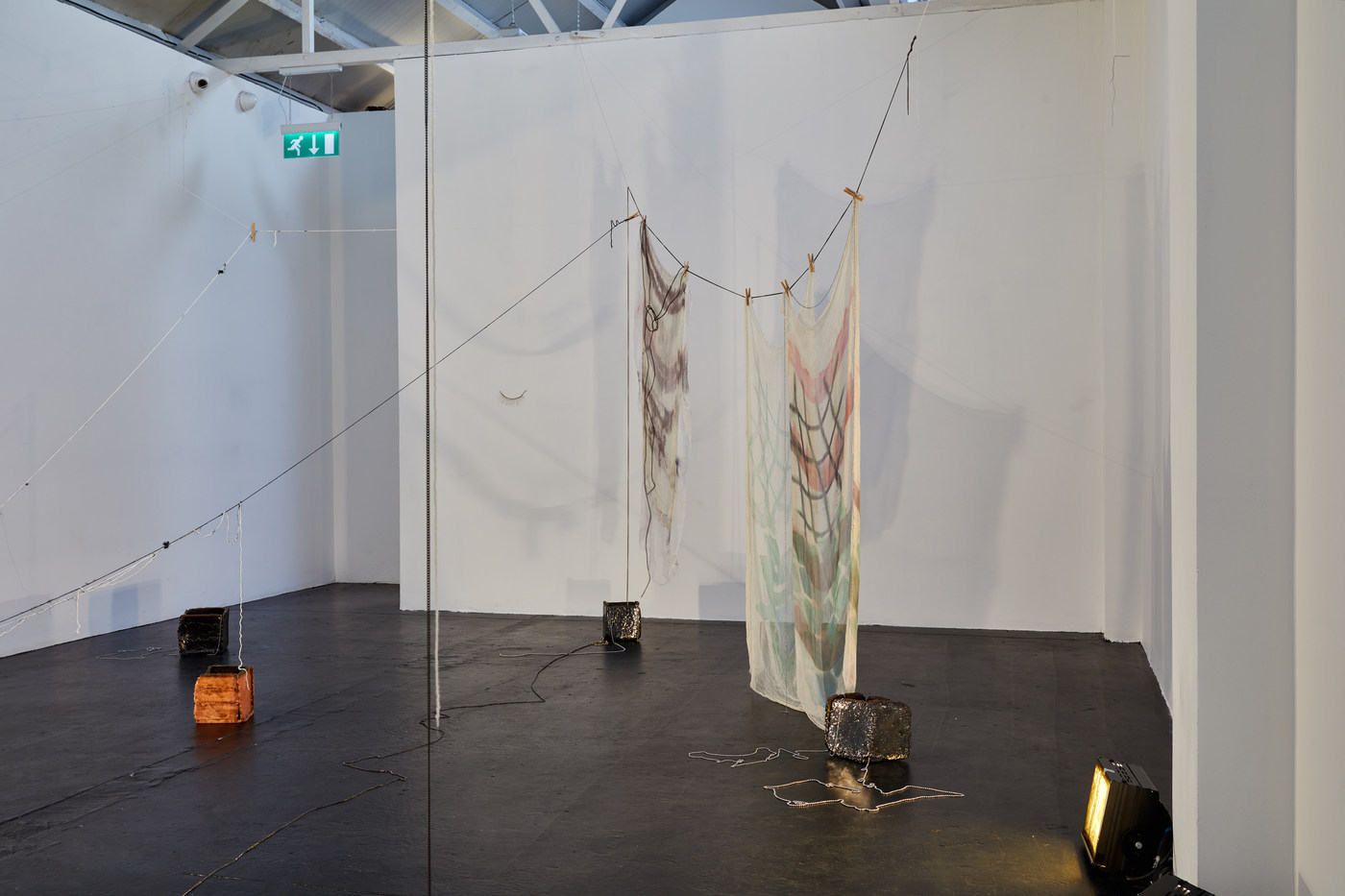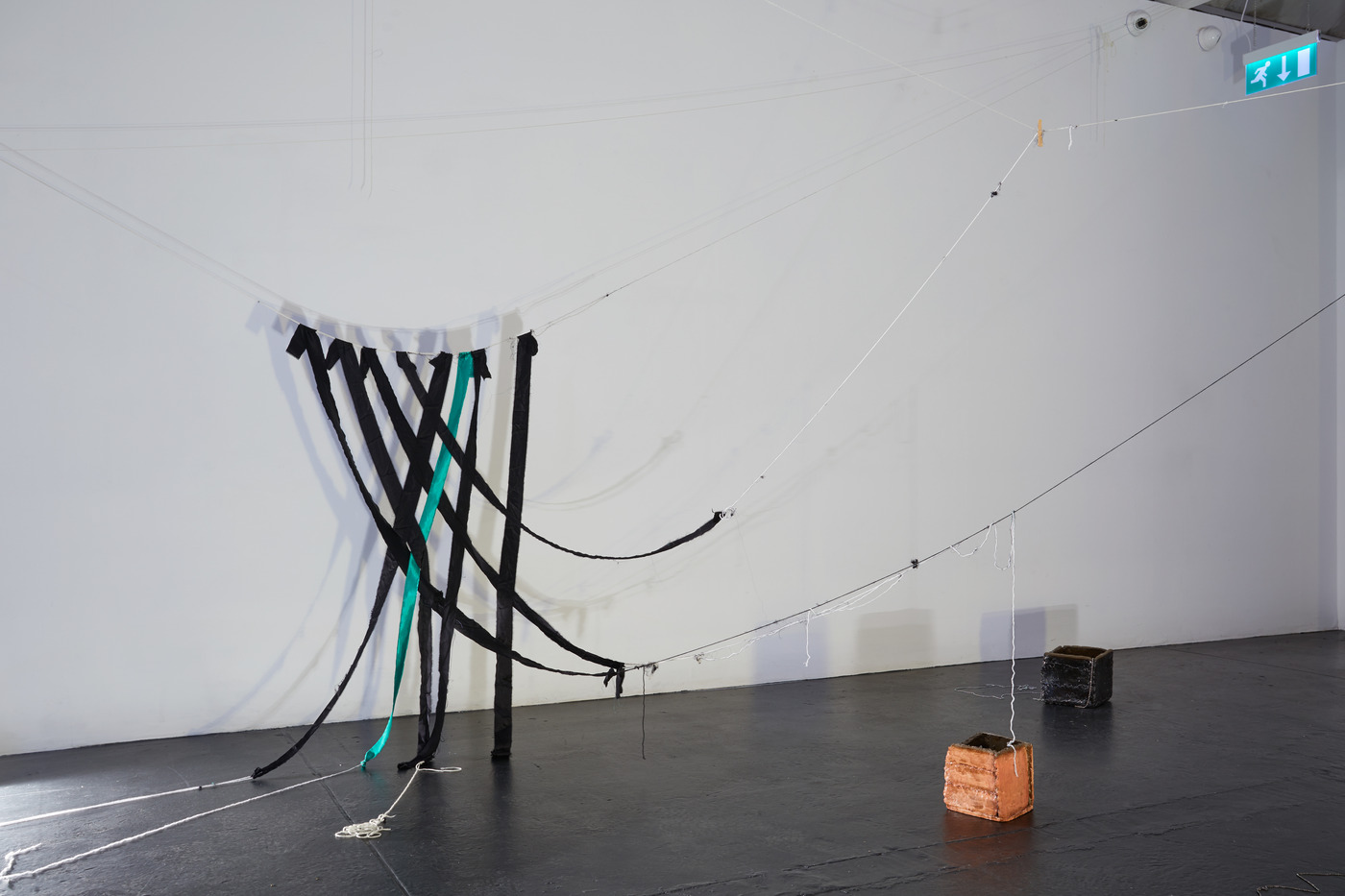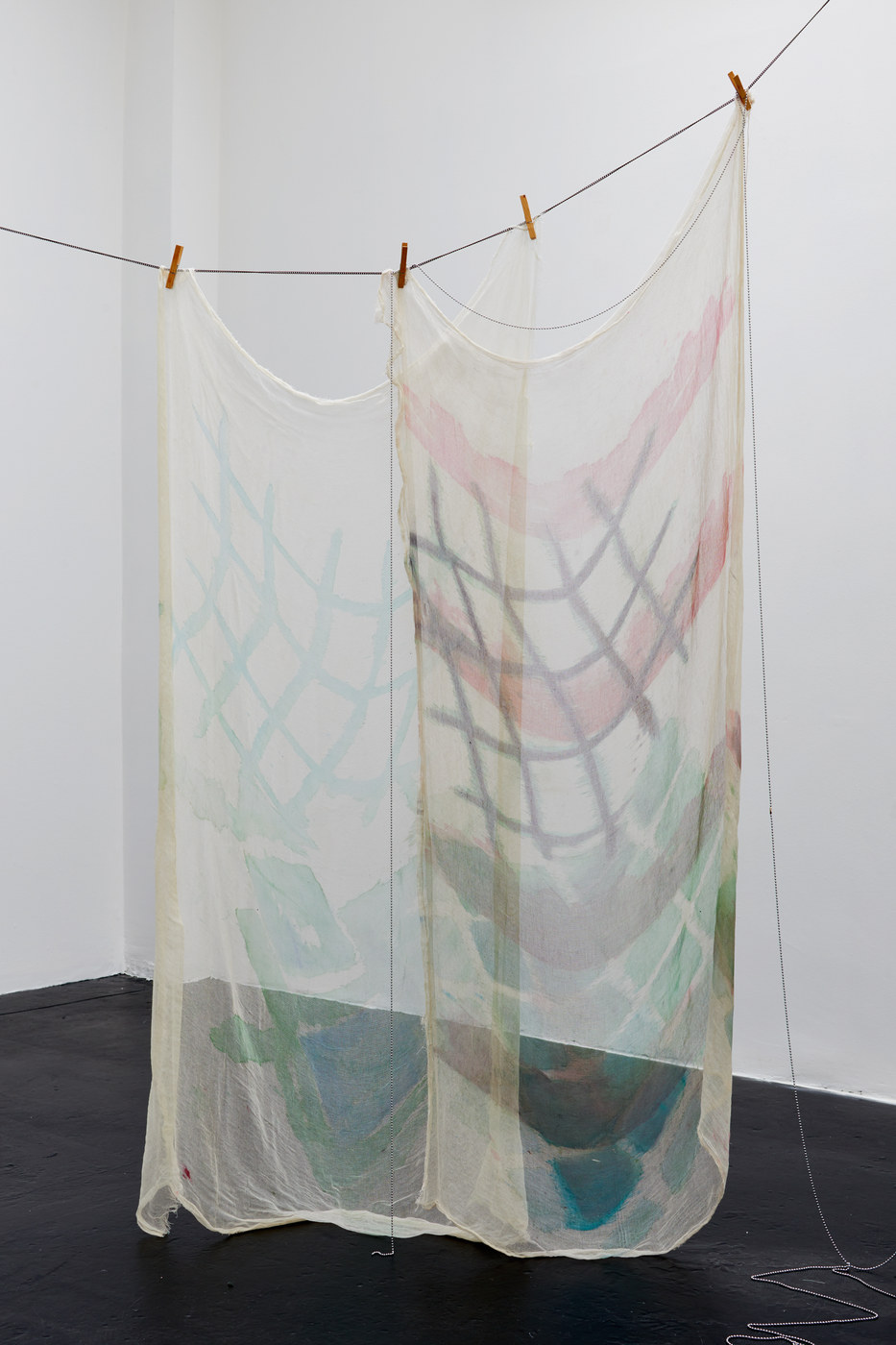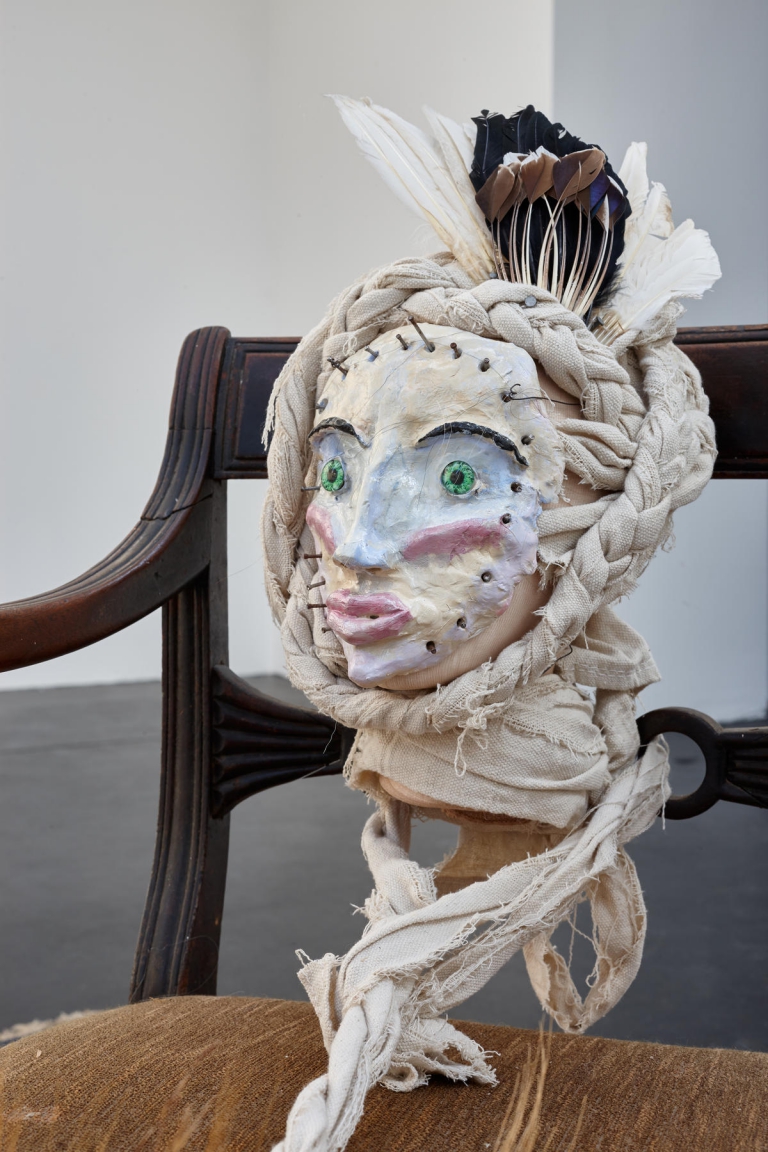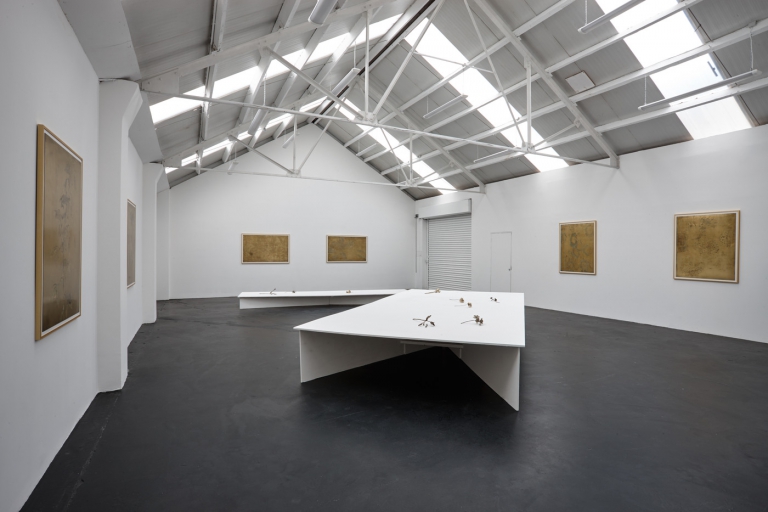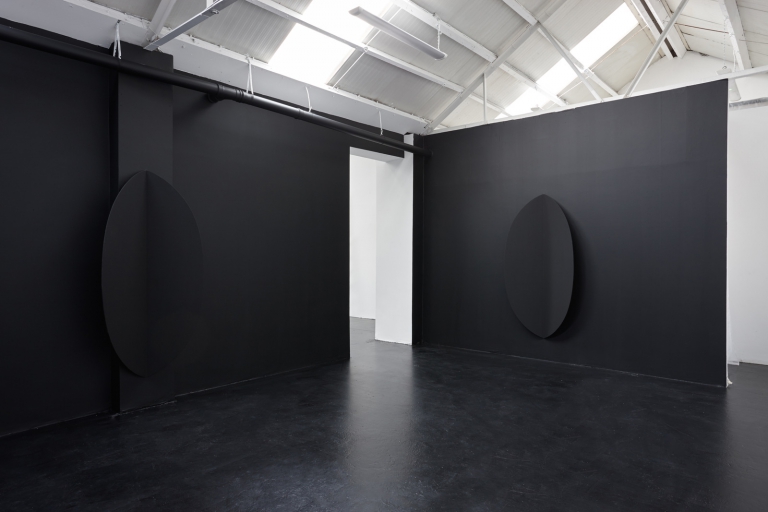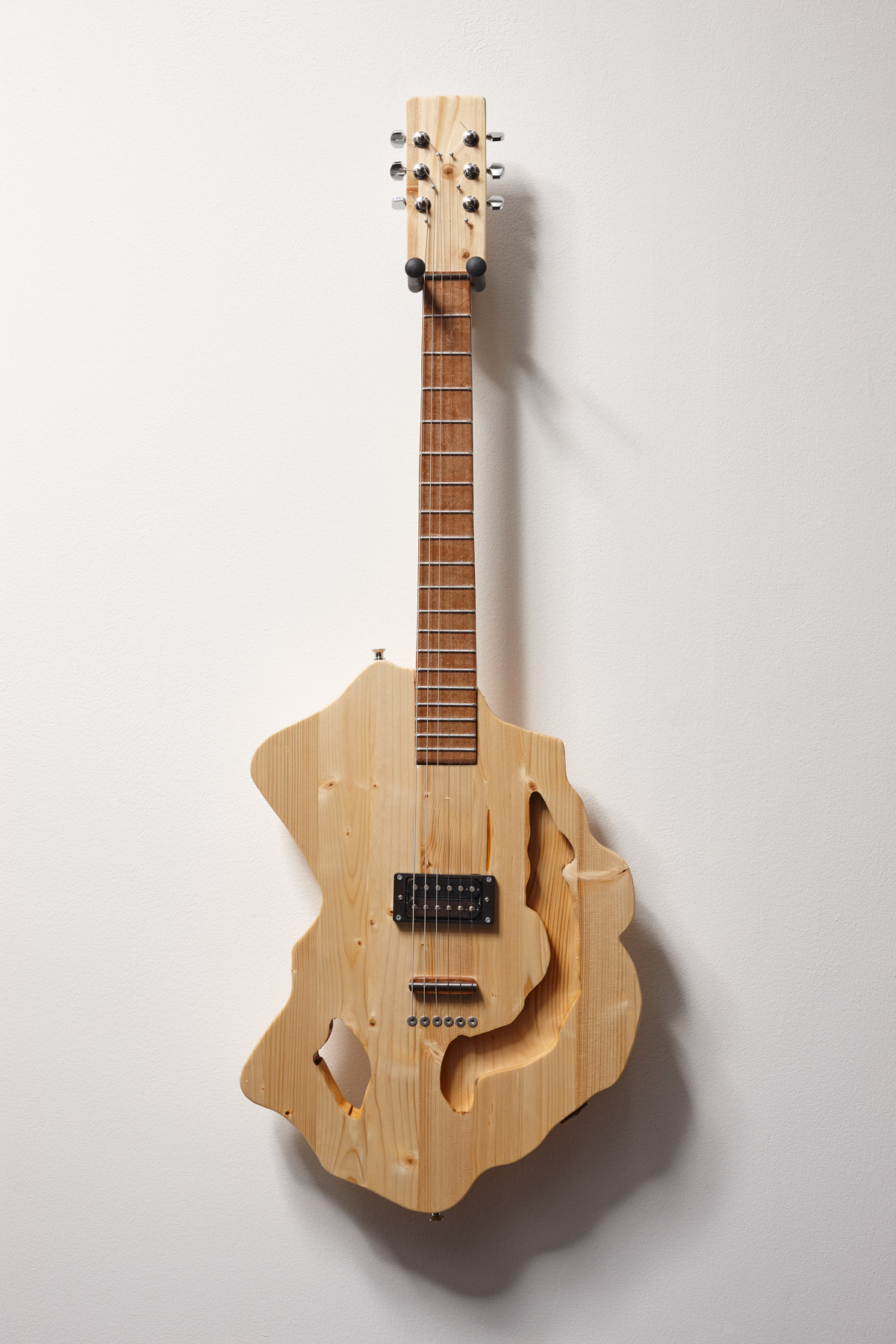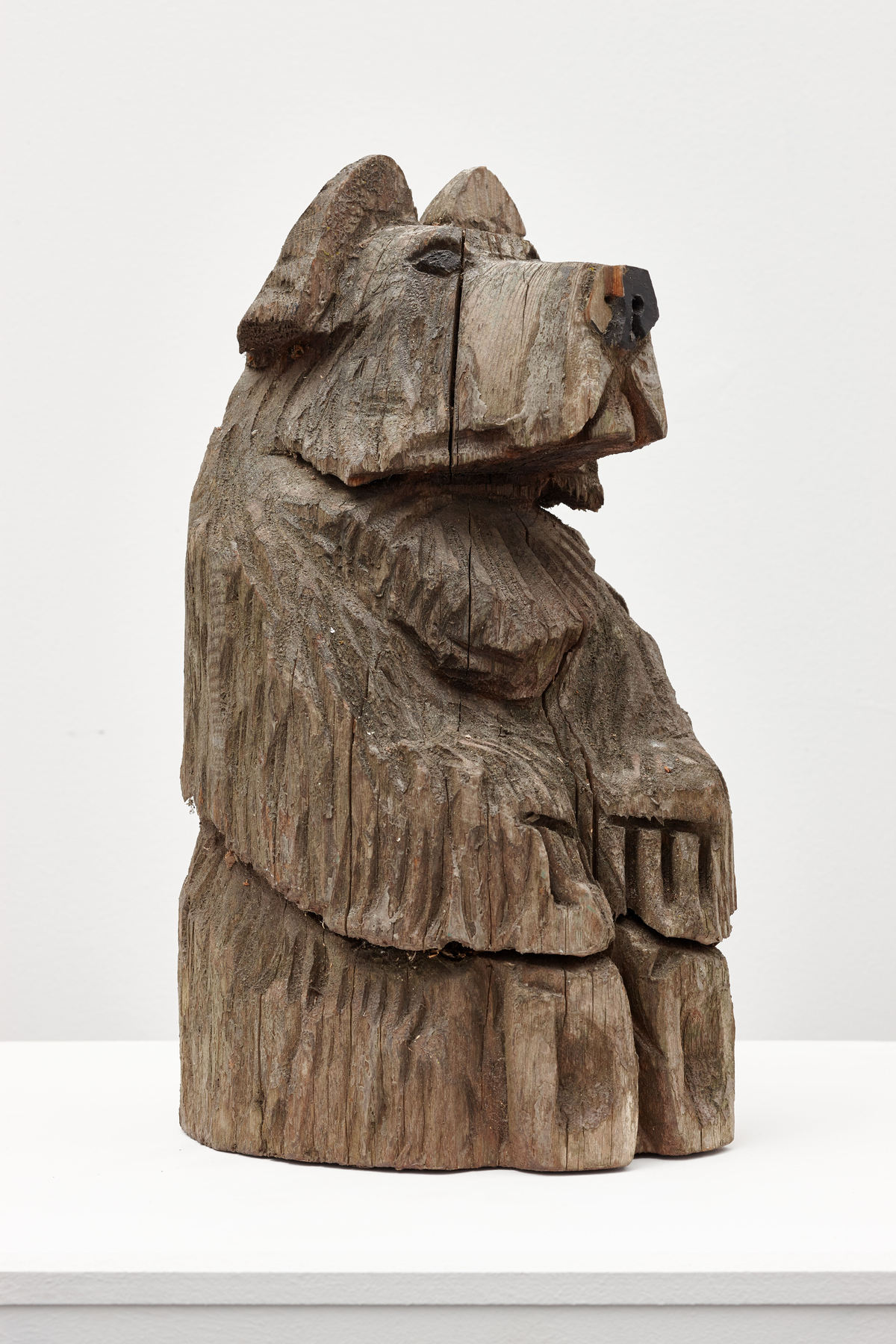Artist: Hanna Törnudd
Exhibition title: Anette från Ytterskärgården (Anette of Outer-Archipelago)
Venue: Ellis King, Dublin, Ireland
Date: March 24 – April 29, 2017
Photography: all images copyright and courtesy of the artist and Ellis King, Dublin
Casting a net yields greater bounty than fishing with a pole. In the Baltic sea surrounding Stockholm’s archipelago, where the once plentiful fish population has decreased significantly over the years, it’s not uncommon to haul in just a handful of fish, if any at all. It is more likely to accumulate a collection bits and pieces of the islands’ past, remnants of a former society that struggled more than it managed to survive.
At the turn of the 20th century, Busk-Anette lived with her family in a hut among the remote islands of the outer archipelago. Life conditions were extreme and one by one she lost the members of her family to nature’s perils and suicide. Busk-Anette remained there in seclusion, making a living by selling flowers and berries on the more populated island of Sandhamn, close to the mainland. Everyday, she would row her boat there, regardless of the weather conditions.
Busk-Anette’s husband, Rydman, kept a detailed written record of their lives, which by the end of his life comprised a sizeable volume. One tragic day, stricken by grief upon hearing news of his son’s death by drowning, Rydman took his own life. Busk-Anette was herself illiterate and had grown suspicious of the content of her late husband’s text, which she was unable to read. She subsequently set flames to the pages of his memoir. Rydman’s account of Busk-Anette’s narrative was thus lost in fire and everything known about her comes from the oral history passed on through generations.
In Finnmark, at the northernmost tip of Norway, six-thousand year old rock carvings – intricate patterns comprised of overlapping horizontal and vertical lines – are some of the earliest depictions of net-fishing. In Scandinavian mythology, the sea goddess, Rán, would use a fishing net to trap lost sailors.
Hanna Törnudd’s use of suspended gauze refers not only to the patterns and structure of fishing nets used for millennia – it evokes the wispiness of morning haze, like that which hovers over the sea-surface during the early hours of the day. The hanging fabrics also function as (semi-transparent) surfaces, upon which impressions of the islands’ past have been applied in dye patterns, iterating motifs that recur in various capacities and densities throughout the exhibition. They embody a kind of transience akin to the impermanence of fog, while also functioning as a lense through which to view the inner and outer realms of the exhibition.
Ceramic cubes recall the ruins of former cottages, which can be found scattered throughout the landscapes of the archipelago. Here they take on multiple roles. Forming a kind of constellation upon the gallery’s ground, they act as anchors providing stability for the floating gauze net haze.
The surface glaze colors of the ceramic works allude to common shades and hues found in the natural landscape of the archipelago.
The oral and written histories of the archipelago, and the stories passed on through generations pertaining to Busk-Anette and her epoch – not to mention history in general – are written almost exclusively by men, from a male perspective. Here, in a tribute to Anette, her own, imaginary voice speaks out from the open book hanging on the south-facing wall in an unfolding narrative held onto and captured by the objects in the gallery. The ebb and flow of waves reverberate throughout the gallery. This recording comes from Swedish public radio; it is sounds one hears in the wee hours of the morning, after normal programming has ended, when nobody’s listening. Buried in the sound of waves, as from a distance, a single note played on a cello reminds us that there’s someone out there.
On one particularly windy day, Busk-Anette rowed to Sandhamn as usual, but when it was time to return home, the weather had amplified into a full storm. The large boats were forced to remain at shore, but Busk-Anette was determined to row home. Intent on stopping her, the community hid her boat and her oars, but she found them anyway and rowed directly into the strong windstorm coming from the North. She rowed well into the night, but finally arrived home.
-Stefan Tcherepnin
Hanna Törnudd, Book of Busk-Anette, 2017, Silk, Satin, tweed wool, rope and trim, 161 x 171 cm (63” X 67”)
Hanna Törnudd, Book of Busk-Anette, 2017, Silk, Satin, tweed wool, rope and trim, 161 x 171 cm (63” X 67”)
Hanna Törnudd, Blurring Filter, 2017, Gauze, dye, nylon trim, mixed chains, Dimension Variable
Hanna Törnudd, Blurring Filter, 2017, Gauze, dye, nylon trim, mixed chains, Dimension Variable
Hanna Törnudd, Dealer, 2017, Silk, satin, yarn, Dimension Variable
Hanna Törnudd, Dealer, 2017, Silk, satin, yarn, Dimension Variable
Hanna Törnudd, Björkskär, 2017, Ceramic, glaze string, 19 x 19 x 29 cm (7.5” X 7.5” x 11.4”)
Hanna Törnudd, Vargholmen, 2017, Ceramic, glaze mixed chains, 21 x 21 x 20 cm (8.3” X 8.3” x 7.8”)
Hanna Törnudd, The Red Gold, 2016, Ceramic, glaze, mixed chains, 25 x 25 x 26 cm (9.8” X 9.8” x 10.2” )
Hanna Törnudd, The Traveller’s Cloak, 2016, Silk, Satin, cotton, tweed wool, ball chain, 242 x 215 cm (95.3” X 84.6”)
Hanna Törnudd, The Traveller’s Cloak, 2016, Silk, Satin, cotton, tweed wool, ball chain, 242 x 215 cm (95.3” X 84.6”)
Hanna Törnudd, Fossil, 2017, Wire, glue, 17 x 10cm (6.8”x 4”)
Hanna Törnudd, Ägge kob, 2017, Ceramic, glaze, mixed chains, 17 x 19 x 18 cm (6.7” X 7.5” x 7”)
Hanna Törnudd, Hovering Whisp, 2017, Gauze, dye, yarn, nylon trim, Dimensions variable
Hanna Törnudd, Hazy Twin Nets, 2017, Gauze, dye, yarn, mixed chains, Dimensions variable
Hanna Törnudd, Harö, 2017, Ceramic, glaze, mixed chains, 23 x 19 x 18 cm (9” x 7.5 x 7”)
Hanna Törnudd, Island Stone, 2017, Found Granite, 15 x 16 x 13 cm (6 x 6.3 x 5)









